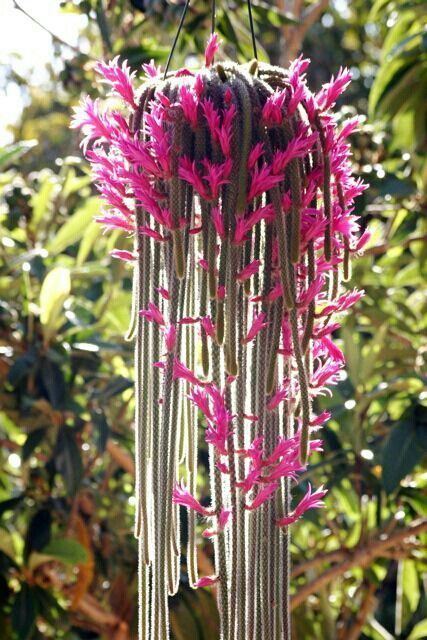Kingdom Plantae Genus Disocactus Higher classification Disocactus | Order Caryophyllales
Catus Scientific name Disocactus flagelliformis Rank Species | |
 | ||
Similar Disocactus, Cactus, Cleistocactus, Epiphyllum, Daisy anemones | ||
Disocactus flagelliformis or (rattail cactus) is a species of Cactaceae and is the most cultivated species in the genus. Due to its ease of cultivation and attractive floral displays, D. flagelliformis is often grown as an ornamental pot plant.
Contents
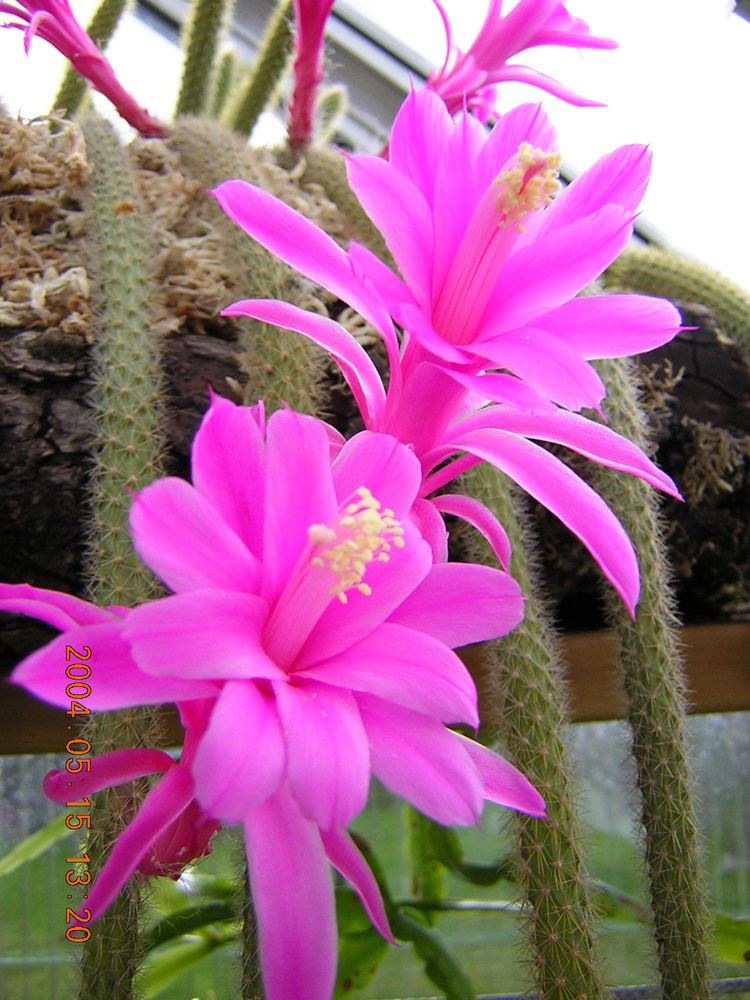
Synonymy

Etymology
Flagella (Lat.) = whip or lash. A reference descriptive of the stems.
History
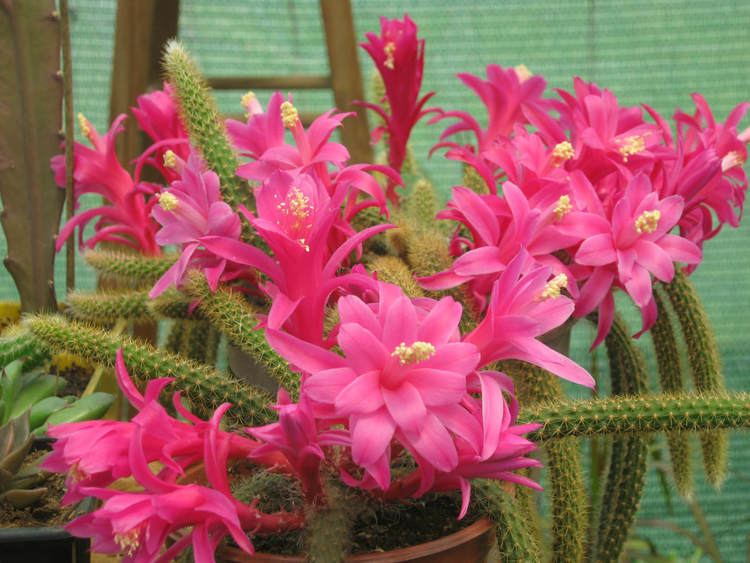
One of the first cacti to be introduced into European culture. Watson (1898) offers the year 1690 but probably earlier. This has always been one of the most popular cacti in cultivation. Still almost nothing is known about its natural habit.
Origin and habitat
Mexico: Hidalgo. Dry forests. Lithophytic or epiphytic in dry forests. Seems rare and seldom collected in the field.
Systematics
A quite distinct species, not merging to any relative. Most closely related to Disocactus martianus.
Cultivation
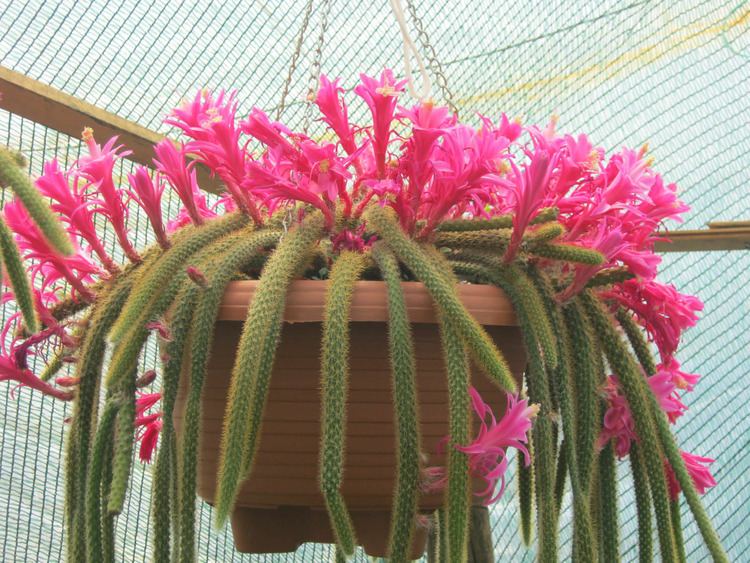
Rattail cacti are very easy to grow, being suitable for a greenhouse and container, indoors or out. These plants need a minimum temperature of 6°C (43° F). They should be grown in bright, indirect light, in a fairly rich potting mix. The best compost consists of four parts sandy loam, and one part of equal quantities of sand and crushed brick. They should be repotted every other year because their soil tends to sour. This doesn't mean, however, that they'll need larger pots. Once the plants are established, keep the compost moist from April to October; less water is required from November until March, just enough to keep the stems from dying back. In the winter, old or discolored stems may be cut out at the base to encourage new growth.
Description
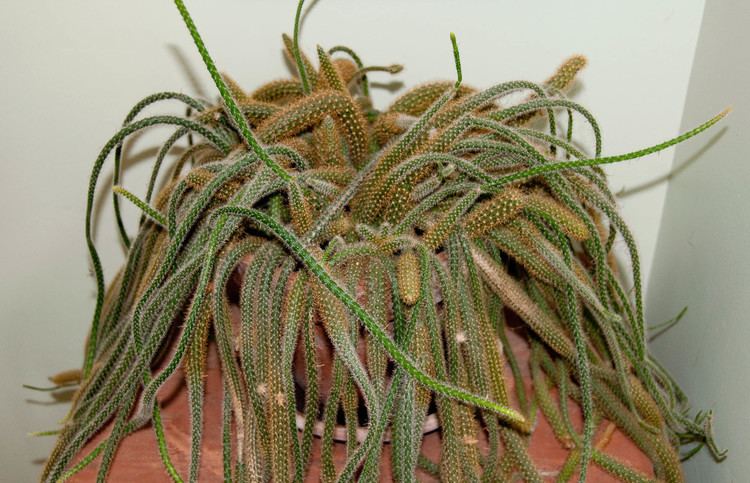
Stems ascending, later prostrate or pendent, profusely branching at base, 1-2 m long or more, 8-24 mm thick; ribs 7-14, obtuse; margins ± tuberculate; areoles minute, whitish; internodes 4-8 mm; spines 8-20, 3-8 (-10) mm long, bristle-like, yellowish to brownish; epidermis green, later grayish. Flowers zygomorphic, 7-10 cm long, 2-4 (-7,5) cm wide, limb bilaterally symmetric, oblique, diurnal, open for 3-5 days, scentless; pericarpel greenish with acute bracteoles; receptacle 3 cm, long, curved just above pericarpel, bracteoles, brownish, acute; outer tepals linear-lanceolate, ± reflexed, 2-3 cm long, 6 mm wide, crimson; inner tepals narrowly oblong, to 10 mm wide, crimson, sometimes passing to pink along the margins; stamens white to pale pink, erect, excerted; style stigma lobes 5-7, white Fruit globose, 10-12 mm long, red, bristly, pulp yellowish; seeds ovoid, brownish red.
